The Social Circle of S. M. Prokudin-Gorsky

Richest merchant of Cherdyn, wild animal trader and patron. Prokudin-Gorsky was hosted by Alin during his visit to Cherdyn in May-June 1913. Prokudin-Gorsky has captured Alin’s collection of stuffed animals and birds in detail. He also described Alin with warmth in his memoirs ‘My trip to Cherdyn’(1934).
Russian literature historian, critic, folklorist, novelist. There is a letter from S. Prokudin-Gorsky to E.V. Anichkov, stored in Russian State Literature & Arts Archive.

Economist, educator, publicist, cooperative member. He was a head of Russian Academic Group in Paris in 1922–1942. Prokudin-Gorsky was a member of this group.
An associate of Prokudin-Gorsky. He is named in the list of persons accompanying Prokudin-Gorsky during his departure abroad in 1918.
Artist, sponsor of schools for peasants’ children. She was married to Pavel Alexandrovich Bakunin (1820–1900). From Prokudin-Gorsky’s letter to Leo Tolstoy dated 27th of May 1908: ‘returned home only today, as I stayed in Moscow at N.Bakunina’s place’. Exact nature of relationship not known.
Russian cavalry general. Prokudin-Gorsky photographed in 1912 at Baratov’s country estate near Batumi (photo ‘Green peninsula near Batumi. In Baratov’s garden. Etude’).
Maternal grandmother of S.M. Prokudin-Gorsky. She was a baptizer for his elder son in 1892.
Mining engineer, Valid State Counselor, manufactory counselor, was a U.S. citizen, who tool Russian citizenship in 1910. Board member of Russian-French Commercial Bank, chairman of the board of Neva Society of Shipbuilding and Mechanical Plant, as well as of cement plant ‘Asserin’, director of Partnership of Gatchina’s Plant of A.S. Lavrov (S.M. Prokudin-Gorsky was the second of the two directors of this plant).

Wife of Dmitry Sergeevich Prokudin-Gorsky, daughter-in-law of S.M. Prokudin-Gorsky.
State Counselor, factory owner, and industrialist. In January 1913, an investor in the trust company and firm “S. M. Prokudin-Gorsky and Co.”
Merchant of 2nd guild, owner of photographer's parlor on Nevsky prospect since 1895. Constant member of Fifth Section of the Imperial Russian Technological Society since 1896.
Architect, graphic artist, director of Academy of Arts’ Library. In 1906 he signed a permission of Academy of Arts to Prokudin-Gorsky to take museum items for photographing in his studio.
Art activist. According to some sources Prokudin-Gorsky was a shareholder of her studio ‘V.A. Bernshtamm, which produced light pictures for magic lantern. They got close in 1917.
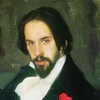
Russian painter, book illustrator, theatre designer, photographer. Collaborated with Prokudin-Gorsky in publishing projects, linked to the Romanov dynasty anniversary.
Saint-Petersburg merchant of 2nd guild. He was a co-owner of photozincography studio of S.M. Prokudin-Gorsky on 22 B. Podyacheskaya street.

Professor, notable specialist in astronomy and measurement of length and time, associate of D.I. Mendeleev. He took part in an expedition for solar eclipse observation in January 1907, along with Prokudin-Gorsky. He also wrote a feature article about the expedition later. As a fellow chairman of board of High Institute of Photography and photographic equipment, Blumbach signed travel certificate for Prokudin-Gorsky’s departure abroad on 1st of August 1918.
Chief of publications for the Community of St. Eugenia (The Red Cross). Prokudin-Gorsky corresponded with him in 1905 about producing color photographs of the major sights of note in Russia for subsequent publication as postcards by the Community of St. Eugenia.
One of the directors of Gatchina bell plant in 1894, business partner of S.M. Prokudin-Gorsky’s father.
Head of Prokudin-Gorsky’s studio from March to May of 1915 (mentioned as photo-zincograph in ‘Ves Petrograd’ directory from year 1915).
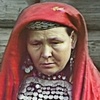
Bashkir peasant, photographed by Prokudin-Gorsky in village Yahia in 1910.

Russian singer. He posed for Prokudin-Gorsky for anniversary photoportraits in 1915. His acquaintance with Prokudin-Gorsky came, most likely, through E. Stark (see Stark, Eduard Alexandrovich).
Georgian (by some sources - osetian) prince, owner of oil fields in Baku. Since January 1913 he is a co-owner of the trust company “S. M. Prokudin-Gorsky and Co.”
Employee of the publishing committee at the Community of St. Eugenia of the Red Cross. In 1907–1913 Prokudin-Gorsky was in business correspondence with him;

Leader of ‘tolstovstvo’ as a social movement, close friend of L.N. Tolstoy, editor and publisher of his works, public figure. Prokudin-Gorsky writes in his memoirs about his acquaintance with Chertkov during a trip to Yasnaya Polyana in 1908.
At the beginning of the 20th century, together with Prokudin-Gorsky, he was a member of the leadership of the Fifth Section of the Imperial Russian Technological Society (he was his "indispensable member").
Wife of Boris Nikolayevich Chicherin (1828–1904), an outstanding Russian scientist and public figure (uncle of the People's Commissar for Foreign Affairs G.V. Chicherin). There is a letter from Prokudin-Gorsky to A.A. Chicherina in the State Archive of Russian Federation about photographing paintings in her estate Karaul in the Tambov province.

Hofmeister, trustee of the Demidov educational institutions. On February 16, 1911, he sent a letter of gratitude to S.M. Prokudin-Gorsky for the given lecture with color photographs display.
Photographer, specialist in the field of photographic equipment, publisher of the photographic almanac ‘Photographic yearbook’. In the late 19th and early 20th centuries, together with Prokudin-Gorsky, he was a member of the management of the Fifth Section of the Imperial Russian Technological Society (he was its “indispensable member”).

Master of the Hunt of the Imperial Court, hereditary trustee of the Demidov House for the Care of Workers (from 1894 on, the “Anatoly Demidov” House), where Prokudin-Gorsky served as a full member from 1890 into the 1900s. The two did not maintain personal contact, but Prokudin-Gorsky gave great attention to photographing places with Demidov connections.

Russian painter. S.M. Prokudin-Gorsky photographed his painting and published them as postcards. No evidence of personal contacts found yet.
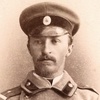
Russian geographer. In November 1900 submitted S.M. Prokudin-Gorsky as a candidate for election to the membership of the Russian Geographical Society.
Owner of typography and artistic photoengraving studio on B. Podyacheskaya street 22. Business partner of S.M. Prokudin-Gorsky.
Colonel, head of Gunib district of Dagestan region. Probably Prokudin-Gorsky stayed at his house during his Gunib visit in 1904. The house is captures in two photos.

Professor, doctor of physics, honored academician, prominent meteorologist, specialist in electrical and optical measurements, associate of D.I. Mendeleev. He took part in an expedition for solar eclipse observation in January 1907, along with Prokudin-Gorsky.

Doctor of medicine, director of the St. Petersburg School of the Deaf-mute since 1901. In 1910, he gave a conclusion regarding the suitability for educational purposes of photographic images in natural colors of various Russian regions from S.M. Prokudin-Gorsky following the results of their demonstration in the Pedagogical Museum of military schools.

Scientist-photographer, member of the Fifth Section of the Imperial Russian Technological Society, head of the editorial board of the journal ‘Photographic News’. Member of the organizing committee for the creation, then professor and rector of the Higher Institute of Photography and Phototechnics in 1918.

Author of many studies on photography during late XIX-early XX centuries. In 1898 he was invited to teach at the photographic courses established by Prokudin-Gorsky. He chaired the meeting of the Fifth Section of the Imperial Russian Technological Society in December 1902, when Prokudin-Gorsky made his first report on the manufacturing of color transparencies.

Photographer, Member of the Fifth Section of the Imperial Russian Technological Society. Collaborator with Prokudin-Gorsky (since 1902 to 1914 he managed the photo-zincographic studio on B. Podyacheskaya street 22) and the creator of several early shots in his collection. In 1914 he apparently stopped his collaboration with Prokudin-Gorsky and started managing his own photo-zincographic studio. He was arrested in 1929, exiled to Krasnoyarsk, transferred to Arkhangelsk in 1934, further life unknown.
Wife of A.A. Evdokimov, actress. Evacuated from Leningrad in 1942, further life unknown.
St. Petersburg doctor, photographer and photography specialist. Fotograf-liubitel (No. 6 of 1906) published his orthochromatic photograph taken near Berlin (he accompanied by S. M. Prokudin-Gorsky during his work in Germany in 1902–1903?). In January 1907, together with Prokudin-Gorsky, he participated in an expedition to observe a solar eclipse (as a doctor). The letter of V. Fatyanov to the Community of St. Eugenia, in which he in particular reports that, together with Prokudin-Gorsky, he is engaged in publishing postcards (1906). After 1917 he worked as a doctor in Leningrad (last mentioned in 1928).
Prussian citizen, photographer, honorary member of the Fifth Section of the Imperial Russian Technological Society in 1913–1914, owner of the institution “K. Fischer, former Dyagovchenko”. member of the Russian Photography Society since 1894. At least one photograph of K. Fischer was published in Fotograf-liubitel magazine (No. 4 of 1909).

St. Petersburg engraving artist, academician. Since 1901, he was a reserve member of the Fifth Section of the Imperial Russian Technological Society; since 1904, an indispensable member of the Fifth Section.

Minister of the Imperial Court of the Russian Empire (1897–1917). On May 10, 1910, Prokudin-Gorsky wrote a letter to Fredericks from Rzhev about albums with samples attached. Other business correspondence also existed.
A process engineer, assisted Prokudin-Gorsky during the show of color photo projections to the Tsar.

Russian botanist, ethnographer, secretary of the Russian Geographical Society. In November 1900 submitted S.M. Prokudin-Gorsky as a candidate for election to the membership of the Russian Geographical Society.

Researcher of old Russian and traditional church art, archivist, long-term employee of church department. Was a member of Vladimir academic archive committee, Saint-Petersburg and Moscow archeology institutes, Society for protection and preservation of art and antiquity monuments, and other scientific societies, committees and commissions. Author of a book ‘Vladimir, Suzdal’, Pereslavl’-Zalessky: guide’ (SPb, 1913), where most of the illustrations are printed from Prokudin-Gorsky’s photos. He also commentated Prokudin-Gorsky’s pictures during their presentation in March of 1916 on a general meeting of members of Society for Revival of Artistic Russia.
Entrepreneur from the town of Gatchina, son-in-law of A.S. Lavrov (see Lavrov Alexandr Stepanovich), brother-in-law of S.M. Prokudin-Gorsky. As well as Prokudin-Gorsky, he was a member of the board of Pratnership of Gatchina copper-steel-casting and bell plant (he also was the main owner of the company after death of A.S. Lavrov).
Daughter of A.S. Lavrov, S.M. Prokudin-Gorsky’s wife’s sister.
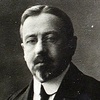
Russian physicist, engineer, founder of Russian optics industry, major specialist in applied optics, electromagnetism, radioactivity. In 1898 he was invited to teach at the photographic courses established by Prokudin-Gorsky. Had a practical interest in color photography. Prokudin-Gorsky wrote an obituary for A.L. Gershun (Photographic News, 1915, No. 6, p. 99). Melikov fund (see Melikov, Ivan Andreevich) in Central State Historical Archive of Saint-Petersburg contains "Extracts from the minutes of a meeting of the technical commission of JSC ‘Biochrom’ for testing the optical system of Professor Gershun for color cinema. 1914–1917".

Prominent Soviet statesman, associate of V.I. Lenin, one of the organizers of Soviet science, academician. In 1922, after the formation of the USSR, he became executive secretary of Council of People's Commissars of the USSR and the Council of Labor and Defense - he held this position until 1931. Together with Mikhail, youngest son of S.M. Prokudin-Gorsky, he studied at the famous real gymnasium of Karl May in Petrograd and at the chemical faculty of the Petrograd Technological Institute. He helped in organizing the departure of S.M. Prokudin-Gorsky’s family members from the USSR in 1923-25. Perhaps also facilitated the export of the main part of the collection of S.M. Prokudin-Gorsky.
Artillery major general, father of Pyotr Andreevich Goncharenko, first husband of the eldest daughter of S.M.Prokudin-Gorsky.
Brother of Pyotr Andreevich Goncharenko, first husband of the eldest daughter of S.M.Prokudin-Gorsky.
First husband of the eldest daughter of S.M.Prokudin-Gorsky. Marriage date is 6th of October 1913.
Mother of Pyotr Andreevich Goncharenko, first husband of the eldest daughter of S.M.Prokudin-Gorsky.
Sister of Pyotr Andreevich Goncharenko, first husband of the eldest daughter of S.M.Prokudin-Gorsky.

Prominent Soviet statesman, associate of V.I. Lenin, one of the organizers of Soviet science, academician. In 1922, after the formation of the USSR, he became executive secretary of Council of People's Commissars of the USSR and the Council of Labor and Defense - he held this position until 1931. Together with Mikhail, youngest son of S.M. Prokudin-Gorsky, he studied at the famous real gymnasium of Karl May in Petrograd and at the chemical faculty of the Petrograd Technological Institute. He helped in organizing the departure of S.M. Prokudin-Gorsky’s family members from the USSR in 1923-25. Perhaps also facilitated the export of the main part of the collection of S.M. Prokudin-Gorsky.
Founder and chairman of the Rybinsk Photographic Society, full member of the Russian Photographic Society in Moscow. Prokudin-Gorsky corresponded with him in 1906 regarding the organization of the display of his photographs in Rybinsk (the visit did not take place)
Executive secretary of the Committee for the celebration of the 300th anniversary of the Romanov dynasty. He was in close contact with Prokudin-Gorsky when he was shooting for the anniversary. In particular, Grave signed a permission to shoot for the needs of the Committee for Prokudin-Gorsky.
Russian botanist, ethnographer, secretary of the Russian Geographical Society. In November 1900 submitted S.M. Prokudin-Gorsky as a candidate for election to the membership of the Russian Geographical Society.
Businessman from Berlin (Firma Dr. Adolf Hesekiel & Co), photographic equipment specialist. Prokudin-Gorsky made a report to the Fifth Section of the Imperial Russian Technological Society on 13th of December 1902, where he described ‘means of production of color transparencies based on three-color photography principle, which he familiarized with on Dr. Hesekiel’s factory’.
Painter. In a photo of P. Kulakov she is captured at the same table with Prokudin-Gorsky in Yasnaya Polyana on May 22-23 1908.

A U.S. inventor; pioneer of color photography. He developed a photochromoscope system of natural color photography and demonstrated it in 1885. Images made by this system showed ideal perspective, form and color, and were observed through a special chromoscope. On 30th of October 1898 Prokudin-Gorsky made a report ‘New device of Ives for projection in natural colors’ in the Fifth Section of the Imperial Russian Technological Society. This is the first known speech of Prokudin-Gorsky on color photography. Nothing yet known on personal contacts between Prokudin-Gorsky and Ives.

Master of the Zlatoust plant in 1853–1908. Prokudin-Gorsky made two photo portraits of A.P. Kalganov in September 1909: an individual one, as well as with Kalaganov’s son and granddaughter. The first of them is signed: “Andrei Petrovich Kalganov. Former factory master. Worked for 55 years, 72 years old. He had the good fortune to bring bread and salt to His Imperial Majesty the Sovereign Emperor Nicholas II”.
Countess, Chair of the Development Commission of the Red Cross Committee. Prokudin-Gorsky signed an agreement with her on March 31, 1905, to produce color images of the major sights of note in Russia for subsequent publication as postcards by the Community of St. Eugenia.
Amateur photographer, was elected an indispensable member of the Fifth Section of the Imperial Russian Technological Society in 1901. Probably he met Prokudin-Gorsky in a photographic exhibition in 1898.
Listed as an employee of S.M. Prokudin-Gorsky during the shooting of Rostov Velikiy in 1911.

Russian painter and photographer of the XIX - XX centuries, the founder of the genre of art photography, a member of the Russian Photographic Society. Prokudin-Gorsky wrote an obituary to him. Having written that Karelin “was the first to prove to the whole world with his many photographic etudes-compositions, that art and photography are in the closest direct connection, that the imagination of the artist-photographer, his graceful taste in the choice of plot-paintings full of thoughts, can be of full use in photography” . (A.O. Karelin // Fotograf-liubitel 1906. No. 9. P.285-286).

Prokudin-Gorsky made his portrait photo during a trip along the Staroladozhsky Canal in June 1909 with the caption “Karlinsky Pinhus. 84 years, 66 years in service. Taskmaster of the Chernigov drainage".

Minister of Education (1910–1914). Participant of the negotiations on the acquisition of S. M. Prokudin-Gorsky’s collection to the treasury.
Wallpaper master, assisted Prokudin-Gorsky during the show of color photo projections to the Tsar.
Scientist, secretary of the Society of Lovers of World Studies. In 1915 he made a recommendation for the acceptance of Prokudin-Gorsky into the society.
Numismatist, publisher of postcards, had a lawsuit with Prokudin-Gorsky in 1904 (case “On Failure to Perform an Agreement on the Publication of Postcards of A. Khrebtov by Photocincography of S. M. Prokudin-Gorsky”).

Russian and Soviet scientist-physicist and teacher, professor, corresponding member of the St. Petersburg Academy of Sciences. In 1910–1912 - Chairman of the Interdepartmental Commission on the acquisition by the treasury of photographic collection of S. M. Prokudin-Gorsky at the Scientific Committee of the Ministry of Education.

Russian architect, editor of the ‘Zodchiy’ magazine, S. M. Prokudin-Gorsky worked for many years with him. In 1905 he organized several demonstrations of photographs of Prokudin-Gorsky.

Russian statesman, chairman of the Council of Ministers of Russia in 1911–1914. He attended a demonstration of color photographs of Prokudin-Gorsky in the expedition and procurement of government securities hall on March 4, 1912. “At the end of the demonstration, V.N. Kokovtsev thanked Prokudin-Gorsky”. He made a review about the demonstration of photographs of Prokudin-Gorsky in Paris in 1932

Russian and Soviet chemist, meteorologist. He chaired the meeting of the First (chemical) Section of the Imperial Russian Technological Society on February 21, 1896, when S.M. Prokudin-Gorsky made his first scientific report "On the Current State of Foundry in Russia". He also requested acceptance of Prokudin-Gorsky as a full member of the Imperial Russian Technological Society in First Section.

Russian statesman, Perm governor in 1911–1914. Received S.M. Prokudin-Gorsky at the end of May 1913 during the latter’s trip to Cherdyn and Nyrob.

Russian botanist, soil scientist, geographer, and paleobotanist. Founder of the Batumi Botanical Garden. He was evidently a guide for Prokudin-Gorsky during his shoots of Batumi flora in 1912. Several photographs of Prokudin-Gorsky were published in Krasnov’s book “Southern Colchis” (Essay by Prof. A.N. Krasnov. Petrograd, 1915).
Process engineer, councilor-in-arms. In 1896, he applied for the acceptance of Prokudin-Gorsky as a full member of the Imperial Russian Technological Society in First Section.
Ethnographer, publicist, photographer, founder of the “Stereographic Publishing House “Svet”, managing director of the publishing house “Obshestvennaya Pol’za”. Member of the Imperial Russian Geographical Society. Together with Prokdin-Gorsky, he visited Leo Tolstoy in Yasnaya Polyana in May 1908. Further related to the activities of JSC “Biochrom”. Sentenced to death and shot.
Mechanic of the Main Chamber of weights and measures (in 1894–1937), employee D.I. Mendeleev, designer of a number of precision metrological instruments. He took part in an expedition for solar eclipse observation to Turkestan in winter of 1906–1907, along with Prokudin-Gorsky. Died after 1930.

The publisher and editor of the Fotograf-Lyubitel (Amateur Photographer) journal in 1890–1905. After retiring from his position of the editor he moved to Lugano, Switzerland, due to health problems. It is possible that this was the reason why Prokudin-Gorsky visited Lugano, where he made a series of photos. Lavrov's autobiographical notes were published in the Fotograf-Lyubitel journal in 1904.

A metallurgical scientist, an active member of the Imperial Russian Technological Society (IRTS), a Major General of Artillery. Prokudin-Gorsky’s father-in-law.
A sister of Prokudin-Gorsky’s first wife. She owned a cottage (dacha) at Siverskaya Station.
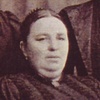
A German scientist in the field of optical physics, co-author of one of Adolf Miethe's scientific works. In a letter of 6 (19) July 1907 to an unknown German person Prokudin-Gorsky asked what Dr. Lehmann was working on at the moment.

The first head of the Soviet Government. On 25 May 1918 he ordered to appoint Prokudin-Gorsky to the Expedition for Procurement of State Documents.

One of the main figures in the Soviet cinema industry, a professor at the Leningrad Technological Institute. In 1917 he was the First Secretary of the State Commission on Education. In 1918 he directed the Petrograd Cinema Committee, in 1918-21 he was the Chairman of the All-Russian Department of Photography and Cinematography. In 1923–1929 he was the director of a school of photography and cinematography. He organized a presentation of Prokudin-Gorsky’s photographs in the Winter Palace in March 1918. In May 1918 he recommended Prokudin-Gorsky to Lenin for appointment to the Expedition for the Procurement of State Documents. Leshchenko was repressed in 1937.

A Russian photographer. In the beginning of the 20th century, together with Prokudin-Gorsky he was among those in charge of the 5th Department of IRTS (one of its "indispensable members").
Manager of G. Pitoyev's Trading Company in Baku. In January 1913 he invested in the trust company and firm 'S. M. Prokudin-Gorsky and Co.'
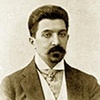
A major Russian oil industrialist. Managing director and member of boards of directors of over 20 oil-producing and other companies, one of the organizers of the Russian General Oil Corporation ('Oil'). In January 1913 he invested in the trust company and firm 'S. M. Prokudin-Gorsky and Co.'
An artist, a Conference Secretary of the Academy of Arts, a Hofmeister of the Imperial Court. In 1910–1912 he was a representative of the Ministry of the Imperial Court in the Science Committee of the Ministry of Education's Inter-agency Commission for Purchase of Prokudin-Gorsky’s photographic collections.

In July 1906 Prokudin-Gorsky visited and thoroughly examined Lumières factory of photographic plates in Lyon. In 1920s he ordered at the factory photographic paper ELKA which he invented.

In July 1906 Prokudin-Gorsky visited and thoroughly examined Lumières factory of photographic plates in Lyon. In 1920s he ordered at the factory photographic paper ELKA which he invented.

People’s Commissar of Education in 1918–1929. He was a likely patron of Prokudin-Gorsky in 1918, since he made an introductory speech at the presentation of Prokudin-Gorsky’s photographs in the Winter Palace in March 1918.

A Slovak writer and translator, the family doctor of Leo Tolstoy. In his diary, Makovický mentioned Prokudin-Gorsky’s visit to Yasnaya Polyana in May 1908.

Russian poet, art critic, organizer of art exhibitions, and publisher. In 1926–1932 he was an editor of the Vozrozhdeniye newspaper to which Prokudin-Gorsky contributed in 1931–1936.
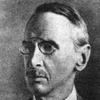
Russian and Soviet scientist and inventor, colleague and business partner of Prokudin-Gorsky in the fields of color photography and color cinematography.
French scientist, author of a treatise on color photography, and supposedly one of Prokudin-Gorsky’s teachers. In fact it is highly unlikely they ever met, since Maumené died before Prokudin-Gorsky had become involved in color photography.
A peasant and a businessman (from 1895), an owner of a bookstore in Petrozavodsk, a publisher of postcards in 1903–1913. In 1903 he published postcards with views of Petrozavodsk with the words 'S.M.Prokudin-Gorsky' on the reverse.

Moscow merchant of the 2nd Guild. Co-owner and manager of the "S. M. Prokudin-Gorsky and Co. (Photozincography)" trust company in St. Petersburg. A member of the boards of: "Biochrome"; the "Tauz" Company for the Production of Cement and other Construction Materials; the "Russian Puzzolana" Company; the "Molot" Company of Mechanical and Cast-Iron factories; the "T. M. Lianozov and Sons" Oil Company; the "R. Golike and A. Vilborg" Company for typography, lithography, phototypography, and zincography; the "Aramazd" Oil Company.

Russian scientist. In 1886–1887 academic year Prokudin-Gorsky attended Mendeleev's lectures on chemistry in Saint Petersburg University. It's possible that he studied in Mendeleev's laboratory in the university. According to Prokudin-Gorsky, Mendeleev arranged the photographer’s first trip to Turkestan to observe a solar eclipse.

Son of D. I. Mendeleev. In January 1907 he and Prokudin-Gorsky took part in an expedition to observe a solar eclipse.
Electrical engineer who assisted Prokudin-Gorsky during his demonstrations of color photograpic projections to the Emperor.

Well-known photographer from Ural, an active member of the Imperial Russian Technological Society. In 1909 he accompanied Prokudin-Gorsky on a photoexpedition along the Iset River.

German scientist, the inventor of the technology of photography utilizing the color separation method. He ran a laboratory in Charlottenburg near Berlin, where in 1902 Prokudin-Gorsky studied color photography. Prokudin-Gorsky considered Miethe to be his teacher.
Scientist and photographer, forester, historian of Siberia, member of the Petrograd Photographic Society, in 1918 the director of the Transparencies laboratory of the Higher Institute of Photography and Phototechnology, which assumed ownership of Prokudin-Gorsky's studio. In March 1919 he reported about a photographer named Alekseyev who wanted to purchase Prokudin-Gorsky's photographic plates from the laboratory, for which he was granted permission by the Institute's Economic Committee.

Prominent Russian revolutionary, a Narodnik, a thinker, and s Mason. He headed the Russian Society of Devotees of Mirovedenie from its founding in 1909. Prokudin-Gorsky directed the Society's photography section in 1917. In 1910 Prokudin-Gorsky’s company manufactured stereotypes for Morozov's "Letters from the Shlisselburg Fortress".

Petersburg photographer who founded her own studio which in 1913 became "The Women’s Russo-Slavic Artistic Photographic Workshop Elena". Prokudin-Gorsky wrote about her admiringly ("Anniversary of E. L. Mrozovskaia", Fotograf-Lyubitel, 1909, issue 2, pp. 35-36).

Russian and Soviet painter. Prokudin-Gorsky visited Nesterov in the beginning of November 1912. Nesterov described this visit in a letter: "Recently Prokudin-Gorsky paid me a visit, on assignment from the Committee for Romanov Tercentenary, with an offer to paint for them "The Election of Mikhail Feodorovich as Tsar", to be printed for the masses (a million copies). At first, I agreed, but later sent a telegram with my refusal, and I am happy that I got rid of this additional burden."

Wife of Mikhail Sergeyevich Prokudin-Gorsky, older son of photographer S.M.Prokudin-Gorsky.

Stepmother of Lidiya Nizovets who was the wife of Prokudin-Gorsky’s younger son Mikhail. After all members of Prokudin-Gorsky’s family had left for France in 1923–1925, she lived in their apartment in Leningrad until 1930 (at 40 Vereyskaya Street, apartment #1), when she left for France. Prokudin-Gorsky left her the "family silver" and his collection of violins to look after. She may have been the last keeper of the Prokudin-Gorsky’s collection of photographs.
Council Assessor, the Director of the 2nd Shipping Circuit of Vytegra District of Transportation. He may be the person on Prokudin-Gorsky's photograph 'Chapel in Miatusovo' made on Svir River in 1909.
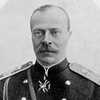
Duke of Oldenburg, a member of the State Council, General of the Infantry, Adjutant-General. Founder of a resort in Gagry, Georgia. Prokudin-Gorsky was apparently his guest during the photoexpedition in Gagry, as the Duke's automobile is on one of Prokudin-Gorsky’s photographs.

Russian popularizer of science and technology, stenographer, editor, and translator. In the beginning of the 20th century, together with Prokudin-Gorsky he was among those in charge of the 5th Department of IRTS (one of its "indispensable members"). In his farewell address to the readers in Issue 12 of Fotograf-Lyubitel journal in 1909 Prokudin-Gorsky highly recommended Olkhin's publication "Fotografichesky vestnik" (Photography Herald).
An artist who worked in Saint-Petersburg. In 1898 Prokudin-Gorsky lived in Ovsyannikov's apartment at 13 Manezhnyy pereulok. In the same year Ovsyannikov was an instructor at the photography courses established by Prokudin-Gorsky. In 1901 Ovsyannikov created an artistic advertizing booklet entitled 'Prokudin-Gorsky Artistic Photozincography has moved to 22 Bolshaya Podyacheskaya Street due to expansion.'
Geographer, forester, founder and administrator of a museum of nature at Farab Station on Trans-Caspian Railway. Prokudin-Gorsky probably met him when he visited the museum in Farab in 1911.

Well-known Russian surgeon. Chairman of the Society for the Study of the Black Sea Coast of the Caucasus. In 1912 Prokudin-Gorsky photographed at his dacha in Uch-Dere near Sochi.

Major General (since 1913), Head of the Evacuation Department at the District Military Sanitary Administration of the Petrograd Military District (since 1915). Since 1894 he was married to Maria Mikhailovna Prokudina-Gorskaya, sister of the photographer S.M. Prokudin-Gorsky. Had a family estate in with. Buryn near town of Putivl, in the vicinity of which Prokudin-Gorsky in 1904 took color photographs of Little Russia. According to unconfirmed reports, since 1918 he served in the Red Army, died in 1921.

Russian photographic artist, theorist of artistic (creative) photography. Prokudin-Gorsky debated with him in the Fotograf-Lyubitel journal.

Russian historian, a Corresponding Member of the Saint-Petersburg Academy of Sciences in Department of History and Philology from 1909. Worked with Prokudin-Gorsky from at least 1906, including publishing projects for Romanov Tercentenary. Platonov's letters exist. Platonov died in exile.

Court Councillor, Assistant of Director of Sukhum Experimental Agricultural Station, Secretary of Sukhum Agricultural Society. He is shown on a 1912 Prokudin-Gorsky's photograph "Cotton. In Sukhum Botanical Garden".
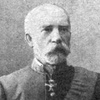
Scientist, Director of the Archeological Institute, professor. He provided scientific support in organizing Prokudin-Gorsky’s photographic expeditions.

Russian scientist and inventor in the field of photography, the first Rector of the Higher Institute for Photography and Phototechnology in Petrograd. Worked with Prokudin-Gorsky in the 5th Department of IRTS from the end of the 19th century. Being the Chairman of the Institute's Council, Popovitsky signed on 1 August 1918 permission for Prokudin-Gorsky to travel abroad.
Russian poet and translator. Co-founder of Prokudin-Gorsky's Yelka photo studio (1924) and co-author of several Prokudin-Gorsky’s patents in 1924-26. According to some information, an agent of Joint State Political Directorate (OGPU) in France. In the end of 1930s returned to the USSR, in 1948 arrested.

Younger brother of S.M.Prokudin-Gorsky. He lived at a farmstead near Tamakulskoye village, Kamyshlov District in Ural. Killed by Bolsheviks in August 1918.

Eldest son of Prokudin-Gorsky. A participant in several Prokudin-Gorsky’s photographic expeditions, he most likely took several photos in the collection.
Prokudin-Gorsky's father. Master of Ceremonies (Kammerherr) at the Russian Court in 1878-95. Died in exile in Siberia.

Younger son of S.M.Prokudin-Gorsky. He probably was the keeper of the Prokudin-Gorsky’s photographic collection in Petrograd in 1918-23.
Second cousin of S.M.Prokudin-Gorsky. Sometimes he is confused with S.M.Prokudin-Gorsky’s brother. There is no information on his contacts with S.M.Prokudin-Gorsky. Buried in Novodevichy Cemetery in Moscow.
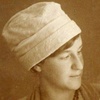

Grand-mother of S.M.Prokudin-Gorsky. Owned the Funikova Gora estate, in which Prokudin-Gorsky was born.
Mother of photographer S.M.Prokudin-Gorsky. Owner of the "Mikhailovsky Manufactures" in Petersburg. Honorary member of the board of the Company of the Gatchina Copper-Smelting Plant of A. S. Lavrov. Philanthropist. Buried in Gatchina, where S.M. Prokudin-Gorsky had lived.

First wife of S.M.Prokudin-Gorsky (1890 to 1920 or 1921).

Grand-daughter of S.M.Prokudin-Gorsky, daughter of his younger son Mikhail. Shortly before passing away she gave several interviews to Russian researchers, in which she recalled that during WWII, Prokudin-Gorsky’s photographic collection had been stored in a damp basement in Paris.
Sister of S.M.Prokudin-Gorsky. In 1894 she married Pavlov, Joseph Vladimirovich (1866–1921?). She lived in St. Petersburg until 1917. Her further fate is unknown.
Prince. From 1911 Major General of the Imperial Suite, Director of Imperial Residence in Tsarskoye Selo. Patron of Prokudin-Gorsky, one of the organizers of his first meeting with the Tsar in 1909.

Russian scientist and hydraulic engineer. Designer of a dam on Oka River near Beloomut village in Ryazan Governorate. He is found on several photographs made by Prokudin-Gorsky on the dam's construction site in 1912.

One of the figures of the Russian emigration, writer, publicist, journalist. Since 1926 he worked in the Paris newspaper ‘Renaissance’, among other things he covered the performances of S. M. Prokudin-Gorsky with a demonstration of photos from his collection.
Author and editor of one of the most popular tutorials on photography. From October 5, 1901 to November 1912, together with Prokudin-Gorsky, he was a member of the management of the Fifth Section of the Imperial Russian Technological Society (he was its “indispensable member”).

Russian painter, archeologist, traveler, public figure, and thinker. At a meeting on January 21, 1911 of the Ethnography Section of the Imperial Russian Geographical Society, Roerich and Prokudin-Gorsky presented a proposal about their planned trip along the Volga, through the Urals, and into Central Asia to take cinematic and photographic shots. The summer of that same year, in a letter from a German resort, Roerich told his wife that he did not want “...to go to Kostroma with Prokudin.” Nevertheless, some of Roerich’s paintings literally reproduce a number of Prokudin-Gorsky’s architectural shots, possibly providing evidence of their association.

Grand Duke. As the Manager of the Russian Museum of Emperor Alexander III, he participated in 1910–1911 in negotiations on the acquisition of the Prokudin-Gorsky collection to the treasury. The latter also took pictures of his palace in Borjomi.

Grand Duke. One of Prokudin-Gorsky’s patrons. On February 11, 1910 a memorandum was filed by S. M. Prokudin-Gorsky to Grand Duke Konstantin Konstantinovich with a request for help in publishing an album characterizing the Mariinsky waterway and the Middle Urals.

Grand Duke. A patron, beginning April 25, 1902, of the St. Petersburg Photography Society, and a supporter of Prokudin-Gorsky. The latter mentions their personal acquaintance in his memories.

The last Russian emperor. Since 1909 he sponsored Prokudin-Gorsky’s photographic expeditions.
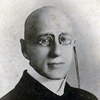
Grand Duke. Exiled to Turkestan, where in 1886 he began a grandiose project to irrigate and colonize the Hungry Steppe. Prokudin-Gorsky devoted a large series of photography to this project, and probably associated with the Grand Duke during the shoots.

Russian Empress, wife of Nicholas II (since 1894). S.M. Prokudin-Gorsky addressed her some of his petitions.

Russian empress. She sponsored Prokudin-Gorsky and organized his first visit with the tsar. She invited Prokudin-Gorsky to photograph at the imperial villa near Copenhagen in October 1908.
Count, full state councilor, hofmarshal, head of the Chancellery and personal secretary of the Empress Alexandra Feodorovna, managing affairs of emperor’s children. Prokudin-Gorsky corresponded with him in 1910–1911.
Member of the board and co-owner of the director of Partnership of Gatchina’s Plant of A.S. Lavrov. In 1886–1914 - Head of the Office of the Gatchina Palace Administration. After 1917 he immigrated to Japan.
Russian publisher, inventor in the field of printing technology. In 1898 he conducted practical classes at the photographic courses organized by Prokudin-Gorsky.

Minister of Communications and Transportation of Russia 1909–1915; by order of the tsar he provided assistance to Prokudin-Gorsky during his photoexpeditions.

The grandmother of the first wife of S.M. Prokudin-Gorsky, who was the owner of the estate in the village of Turovo. She was a recipient at the baptism of the eldest son of S.M. Prokudin-Gorsky in 1892.
Official in the chancellery of the Minister of Trade and Industry (1906–1917), cinema industrialist, stockholder in the “Biochrome” company (later ‘’Biofilm’’). In May 1914 Prokudin-Gorsky wrote him from Paris about the manufacture of equipment for color cinematography. Russian State Archive of Film and Photo Documents has a picture of S.M. Prokudin-Gorsky with G.S. Sarkisov in Paris in 1930.

The godfather of S.M. Prokudin-Gorsky, a Russian statesman. The Savelievs' estate was located in the village of Khmelevo, adjacent to Funikova Gora. In 1866 he started his service as an officer in the Russian army, then switched to civilian service. From 1879 to 1908 (according to other sources, in 1880–1904) - Chairman of the Olonets Provincial area Administration. In 1906 he was elected a member of the State Council. Re-elected in 1909 and 1912.

St. Petersburg photographer, owner of the photo studio “A. Renz and F. Schrader”. At the beginning of the 20th century, together with Prokudin-Gorsky, he was a member of the leadership of the Fifth Section of the Imperial Russian Technological Society (he was his "indispensable member").

Head of the civilian fire brigade of the county town of Vytegra, state adviser, railroad engineer, head of the 2nd technical inspection section of the Vytegorsky District of railroads, head of the Vytegorskaya rescue station (at the mouth of the Vytegra river). Captured in a picture of Prokudin-Gorsky "Fire brigade in Vytegra", taken in 1909 (in the front row, 6th from the left).
A specialist in photography, a member of the Russian Photographic Society, author of the article “Three-color positives” in Fotograf-liubitel 1906, No. 8.

An associate of Prokudin-Gorsky in the pre-revolutionary period (from 1905 to 1918). In 1908 he traveled with Prokudin-Gorsky to Yasnaya Polyana for the filming of Leo Tolstoy. Then he participated in many expeditions. After the revolution and until the end of his life, he worked at the State Optical Institute in Leningrad
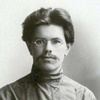
Russian scientist in geography, privat-docent of Kazan University. The author of the essay "In the country of rocks and lakes (Finland)", 1914, St. Petersburg, which was illustrated by photographs of Prokudin-Gorsky.

Russian and Soviet geographer, entomologist. There are two letters of S. M. Prokudin-Gorsky to A.P. Semenov-Tyan-Shansky from year 1907 (Archive of the Russian Academy of Sciences. St. Petersburg branch. F. 722. Op. 002. D. 862).

Chief physician of the Railway Network Society, senior physician of the Murmansk Railway Construction Department and management for the construction of the line "Petrozavodsk-Kem" (1916). Present on two pictures of Prokudin-Gorsky "Group of participants of the railway construction", made in Kem in 1916.

Journalist, writer. Sergeienko was in Yasnaya Polyana on May 21-22, 1908, simultaneously with S.M. Prokudin-Gorsky and left memories of this event, in which the photographer appears. Edition: Interviews and Conversations with Leo Tolstoy / comp. and comm. V. Y. Lakshin (Library "Lovers of Russian Literature"), M., "Sovremennik", 1986 "Russkoie Slovo".
Doctor, photochemist, accompanied S.M. Prokudin-Gorsky while visiting the Lumieres factory in Lyon in July 1906 (where Seyewetz was in charge of the production of autochrome plates).
Hereditary honorary citizen, commercial counselor, trusted agent of the Mantashev oil industrialists. Director of the M. G. Alibegov Society for wire, cable, and other mechanical production (Petersburg), Chairman of the board of the Biriusinsky gold mining society. Member of the boards of: Oil drilling society of Tersk Region, the Society for contract drilling and the E. F. Biering mechanical plant, the A. I. Mantashev and Co. Oil drilling and trade society, the “Mirzoev Brothers and Co.” Oil drilling and trade company, the South Sakhalin gold mining society. In January 1913 he was an investor in the trust company and firm “S. M. Prokudin-Gorsky and Co.”

The mayor of the town of Vytegra. Captured in a picture of Prokudin-Gorsky "Fire brigade in Vytegra", made in 1909 (2nd from left).


prince, Russian public figure, court master, senator, member of the State Council, professor of St. Petersburg University, chairman of the Society for Revival of Artistic Russia (1915–1917). He recommended Prokudin-Gorsky as a member of the Society, and also supported the use of Prokudin-Gorsky’s photographs for the purposes of the Society.

Scholar, artist, curator of the Rostov museum and expert on Rostov antiquities. He was a scholarly consultant to Prokudin-Gorsky during photoshoots in Rostov the Great.

Historian of Russian literature, archaeographer and paleographer, corresponding member of the Academy of Sciences. Prokudin-Gorsky in 1905 or 1906 shot the icon of St. good Alexander Nevskii from his collection.

Russian portrait painter. S.M. Prokudin-Gorsky photographed his work and published them as postcards.

Baltic German, owner of an estate near Luga, which was captured in a photograph of Prokudin-Gorky.

A German-Russian inventor in the field of printing. At the beginning of the 20th century, together with Prokudin-Gorsky, he was a member of the leadership of the Fifth Section of the Imperial Russian Technological Society (he was his "indispensable member"). In one of his essays he noted the progress of Prokudin-Gorsky in the field of three-color printing from real life photographs.

Russian mathematician, academician of the Imperial Academy of Sciences. As the chairman of the Scientific Committee of Ministry of Education, he gave a positive conclusion on the feasibility of educational usage and acquisition of the Prokudin-Gorsky collection to the treasury.

Russian scientist in the field of scientific and technical photography. One of the founders (1878) and leaders (until 1916) of the Photography Section of the Imperial Russian Technological Society.

Physicist, professor at the Universities of Warsaw and Moscow He took part in an expedition for solar eclipse observation in January 1907, along with Prokudin-Gorsky.
Russian entomologist, until 1890 managing the Uch-Dere estate of Grand Duke Konstantin Nikolayevich, located on the territory which nowadays is the Loo microdistrict in Sochi. The owner of the Ala-Mellola estate, where S.M. Prokudin-Gorsky and Evdokimov made the first color pictures. Probably one of the organizers of S.M. Prokudin-Gorsky’s shooting in Sochi in 1912.

Russian priest, nephew of E. A. Stark. He officiated at the funeral of Prokudin-Gorsky at the Russian Home in Paris.

Russian music critic and art historian, a friend of Prokudin-Gorsky’s. According to his nephew (see Stark, Boris Georgievich), Prokudin-Gorsky shot his first color photographs at the dacha of his uncle in Finland (on Lake Kaukjärvi). According to some reports, already in 1907 he collaborated with (or even worked in) Prokudin-Gorsky's photozincography studio. It was presumably E. A. Stark who organized the photographing of Shaliapin by Prokudin-Gorsky in 1915.

Owner of a photographic accessories trading company, which since 1882 had been publishing a small-format magazine "PHOTO NEWS" of the I. Steffen trading house. Close business partner of S. M. Prokudin-Gorsky. Editor’s column of the Fotograf-liubitel No. 6 for 1907 entirely devoted to the 25th anniversary of the I. Steffen trading house.

Prime Minister of Russia (1906–1911). He took part in negotiations about acquisition of the Prokudin-Gorsky collection to the treasury.

Local historian, professor of chemistry and technology. Since 1915, he was secretary of the photographic section at the Russian Society of Lovers of World Studies, which in the same 1915 was headed by Prokudin-Gorsky.
Journalist, playwright, publisher of the Novoie Vremia newspaper, organizer of the drama theater in St. Petersburg. There is a letter from Sergei Mikhailovich Prokudin-Gorsky to A.S. Suvorin dated December 2, 1910, stored in Russian State Literature & Arts Archive.

Grandson of Prokudin-Gorsky (son of his daughter Ekaterina).
Grandson of Prokudin-Gorsky (son of his daughter Ekaterina). Lives in France since birth.
Husband of Ekaterina, elder daughter of S.M. Prokudin-Gorsky.
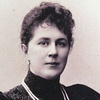
Russian noblewoman, social activist, enamel artist, teacher, philanthropist and collector. In a letter to N.K. Roerich dated December 3, 1911, she announced that she had ordered Prokudin-Gorsky "color photographs for foggy pictures of the same things that H. photographed for me."
Russian legal scholar, professor. According to his daughter, countess Tatiana Nikolaevna Bobrinskaia, Prokudin-Gorsky occasionally dined at Timashev’s place in emigration period in Paris (where Timashev lived from 1932 until 1936, working in newspaper ‘Renaissance’).

Wife of L. N. Tolstoy. Prokudin-Gorsky corresponded with her about the photo shoot at Yasnaya Polyana in May 1908. She posed there for one of Prokudin-Gorsky’s photographs.

Russian writer; he posed for Prokudin-Gorsky for three shots in Yasnaia Poliana in May 1908.
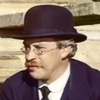
architect. In 1915–1918 he worked as a senior engineer and architect of the Murmansk Railway, which was under construction at that time. Captured by Prokudin-Gorsky in the picture "Group of participants in the railway construction", taken on the not yet finished quay of Kem-Pristan in 1916.
a German chemist, who invented a panchromatic sensitizer together with Adolf Mite in 1902. After this invention, according to Prokudin-Gorsky, “almost correct” color reproduction in color photography was possible. The surname Traube is repeatedly mentioned in the works of Prokudin-Gorsky, their personal acquaintance is very likely.
a teacher of thermodynamics at the Mining Institute of St. Petersburg. At the beginning of the 20th century, together with Prokudin-Gorsky, he was a member of the leadership of the Fifth Section of the Imperial Russian Technological Society (he was his "indispensable member").
Polish-Russian inventor, including photography field. He achieved creation of Fifth (Photographic) Section of the Imperial Russian Technological Society, and personally talked with S.M. Prokudin-Gorsky during sessions of the Section. The latter used photosensitive plates from Varnerke’s business in 1898, and advertised them in his brochure ‘Iso-chromatic shooting with manual instant cameras’ (1903).

Russian historian, archaeographer, educator, professor, member of Scientific Committee of Ministry of Education (since 1906), member of Archaeographic Committee (since 1913), extraordinary professor of Historical-Philological Institute (since 1913). In soviet times – scientific keeper of manuscript department of library of Academy of Sciences of USSR. Author of the book ‘Boyars Romanovs and accession of Mikhail Fyodorovich’ (Saint-Petersburg, 1913), which was illustrated with Prokudin-Gorsky’s photographs. Arrested in 1929 in the ‘Academic case’ and sent to Solovki camp. Lived in Vladimir since early release in 1933.
Владелец фотоателье, вместе с Прокудиным-Горским входил в руководство V отдела ИРТО (активно участвовал в его работе с 1909 г.). На пост заместителя председателя V отдела ИРТО избран 27 февраля 1913 г.
Legal adviser of Marine Ministry (Admiralty), amateur photographer, one of the pioneers of color photography in Russia. Appeared several times as a co-presenter with Prokudin-Gorsky during sessions of Fifth Section of the Imperial Russian Technological Society.

Professor, Head of the Imperial Archeological Commission. He provided research support in organizing Prokudin-Gorsky’s photographic expeditions.

Doctor in Agriculture, dendrologist, chairman of All-Russian arborist union, member of Caucasian Section of Imperial Russian Geographical Society, managing director of Borjomi estate since 1895 to 1918. Probably was a guide of S.M. Prokudin-Gorsky during filming in Borjomi, as he can be seen on multiple images (and also he took a photo of S.M. Prokudin-Gorsky himself).

Russian climatologist and geographer, founder of climatology in Russia. Corresponding member of Petersburg Academy of Sciences (1910). Several photos by Prokudin-Gorsky were published as illustrations in his book ‘Russian Turkestan’ (1914).

Secretary of the Society for the Study of the Black Sea Coast of the Caucasus (founded in 1911, sovereign’s life doctor E.V. Pavlov was a chairman, see Pavlov Evgeny Vasilievich). General komissioner of exhibition ‘Russian Riviera’ in 1913 in Petersburg, where Prokudin-Gorsky also took part. Prokudin-Gorsky corresponded with him during his photographic expedition along the Black Sea coast in 1912. Lived in Belgrade since 1923.

Teacher and natural scientist. In 1910–1913 he was a member of the interagency commission for the acquisition of the Prokudin-Gorsky collection for the treasury, as a representative of the department - Institutions of the Empress Maria. In summer of 1915 he invited Prokudin-Gorsky to his estate in the Sergach district of the Nizhny Novgorod province for shooting. The photographs taken there, as well as some other works from the Prokudin-Gorsky collection, are published in the book: “Primary Geography: a geography course for primary schools on examples mainly from the nature of Russia, with reference to new programs of Ministry of Education with appendix of essays on Homeland Studies and a Brief Overview of Parts of the World ”/ compiled by A. Yashchenko. - Petrograd: Tipo-lithography "Energiya", 1916. Sentenced to death and shot.
Lawyer, photographer. Cooperated with Prokudin-Gorsky within the Fifth Section of the Imperial Russian Technological Society.
Electrical engineer, co-author of the patent of S.M. Prokudin-Gorsky "Optical device for obtaining multiple images for photography and projection" from February 12, 1934.
Professional photographer. He opened "General Practical Photography Lessons" courses in Saint-Petersburg in 1906. S.M. Prokudin-Gorsky attended one of them and gave a laudatory comment in his journal (Fotograf-liubitel 1907, No. 1, p.5).

Hegumen of the Verkhotursky Nicholas Monastery. He was personally acquainted with the royal family. In 1909, he posed for Prokudin-Gorsky. In Soviet times, he was repressed and died in exile.
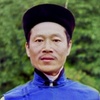
A Chinese tea specialist, the founder of tea production in the Caucasus. He came to Russia in 1893 on an invitation from a Russian tea merchant Konstantin Popov. In 1912 Prokudin-Gorsky made a Lau's photo portrait at the tea factory in Chakva, Georgia.

A monk in the St Nicholas Monastery in Verkhoturye. Grigory Rasputin considered him his mentor. In 1909 he posed for Prokudin-Gorsky in his skete.

The supreme minister of the Emirate of Bukhara in 1910–1917. Posed for Prokudin-Gorsky in 1917. Executed by order of the Emir in March 1918.

Hereditary ruler of the khanate of Khiva from 1910 until 1918. He posed for Prokudin-Gorsky twice in 1911 (the last filming held in Winter Palace in Saint Petersburg).

The last Emir of Bukhara, he ruled from 1910 until 1920. He posed for Prokudin-Gorsky in 1911.

Mother Superior, abbess of the John the Baptist Leushinsky first-class convent. In 1911 she had the honor of introducing herself to the Emperor Nicholas II and the entire August Family. Prokudin-Gorsky captured her in 1909 when he visited the Leushinsky monastery while traveling the Mariinsky system.

Translator and guide for the Imperial Russian Geographical Society in 1907. Accompanied Prokudin-Gorsky during filming in Samarkand in January 1907 and is captured in several of his photographs (for example).